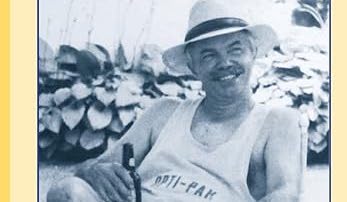There is something about planting on Memorial Day. It isn’t just that my grandfather never dropped a plant in before that day, but it is something more than that.
Any New England farmer worth his salt can tell you that Memorial Day marks the day to start planting. Not one day earlier, as some have discovered in the past the hard way, with things like late frosts and unexpected snowstorms.
In fact one year, not that long ago, an ambitious gardener’s column in a local paper exhorted readers to get moving. The weather had been unseasonably warm, we were into May, and well, it was time to get moving, the writer said.
More than one old farmer chuckled to himself, I would guess. No sooner had the column hit the doorsteps, than a few days later we were greeted by a killing frost, Old Man Winter’s warning to neophytes who venture too far in challenging his staying power. I wondered if anyone had taken the advice and set out their tomatoes.
When Memorial Day arrived on the doorstep of my grandfather’s farm, so did I, and off we went. Sometimes I was the poker, others I was the stamper. He would give me a piece of round wood, which might have been part of a rake handle at one time, I surmised.
“Here, poke a hole a hand width apart and drop in one of these seeds,” he would say, stretching his little finger and thumb to show me how to hold my own. “Then cover it up.”
The poker had marks on it for depth. Melons, pumpkins, corn – all had their marks. Off I would go under his careful surveillance, poking and dropping and trying to stay in a straight line. Other times, he would make a furrow with his hoe, long and straight; then, he would drop seeds a certain distance apart in it as he squeezed them out from his forefinger and thumb, almost like magic. When he was done, I got to cover the rows up, then walk on them, patting them down.
Eventually, the entire field in front of his old farmhouse was planted. Then, off we went to plant the rows and rows of glads (gladiolas), which would eventually yield a huge field of yellows, pinks, whites, oranges and other colors, creating a rainbow of blossoms.
Of course, the rich soil also produced a bumper crop of weeds, which needed to be harvested on a regular basis. There was always something to do.
My mother followed the farmer’s rules, having been well indoctrinated over the years. At times we planted fields of corn, as well as a huge garden full of pretty much everything, especially tomatoes. At one point my oldest brother even planted corn and potatoes to be sold at the side of the road in Harmony.
The corn wasn’t so bad, but I still recall digging potatoes by hand. Not a fun job. The corn offered other challenges, like raccoons in the middle of the night tearing through rows and destroying them.
Mostly, however, I remember my mother carefully nurturing the seedlings she started in the early spring, encouraging them to get going, and eventually planting them and coaxing them to maturity. There is nothing like fresh vegetables from your own garden.
As I go through the ritual myself, I don’t really feel alone. It is almost as if I can feel my grandfather and my mother looking over my shoulder as I set out plants, line up furrows, and even spread manure. There is always part of my garden set aside for glads.
Kneeling in the earth, smelling rich dark soil, digging and planting, it occurs to me that we are bound together over the generations through rituals and habits which become more than the basic patterns we follow, more than trying to get food for the table, more than just doing something to pass the time.

Besides the discipline of watering, weeding and guarding the little plot of earth against varmints and insects, we take from the earth as well. We watch, learn and teach again, connecting to both past and future in one motion. And there is something eternal in the work, something about connecting to Mother Earth as well, almost as if we are enduring a religious ritual, honoring that from which life is created and which in turn sustains life as well.
Maybe Charles Warner said it best, back in 1870:
To own a bit of ground, to scratch it with a hoe, to plant seeds and watch the renewal of life—this is the commonest delight of the race, the most satisfactory thing a man can do.
It’s Memorial Day week. Go plant a garden.
The above is an excerpt from the book Life, Liberty and the Pursuit of Sanity… by Dick Martin, a Glocester resident, former Burrillville High School teacher and contributor for NRI NOW.
Martin can be contacted at [email protected].








